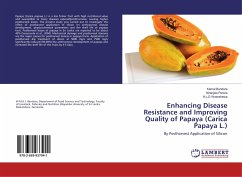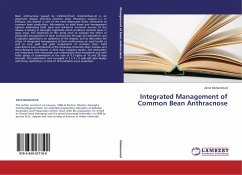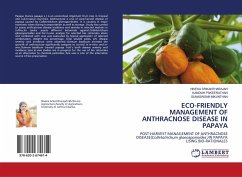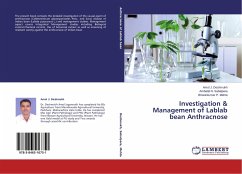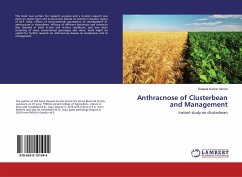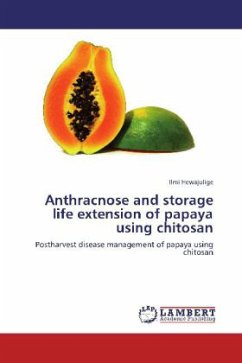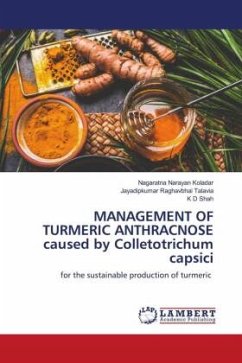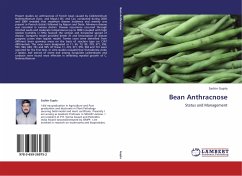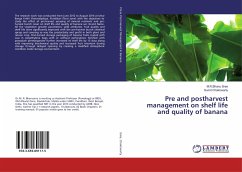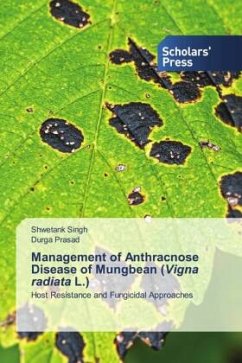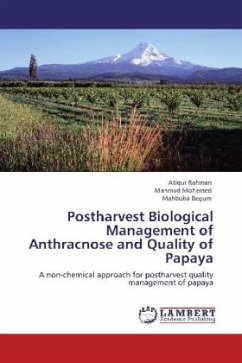
Postharvest Biological Management of Anthracnose and Quality of Papaya
A non-chemical approach for postharvest quality management of papaya
Versandkostenfrei!
Versandfertig in 6-10 Tagen
52,99 €
inkl. MwSt.

PAYBACK Punkte
26 °P sammeln!
Biocontrol potential of epiphytic antagonistic bacteria to manage anthracnose disease and postharvest quality of papaya was evaluated. The papaya fruits were found highly susceptible to several fungal diseases. Among them anthracnose caused by Colletotrichum gloeosporioides was the most prevalent. Epiphytic bacterium, Burkholderia cepacia was found to be the most efficacious biocontrol agent in this study. Chitosan (0.75%) and calcium chloride (3%) were used as enhancer of biocontrol efficacy of B. cepacia B23. Both of these chemicals have suppressive activity against C. gloeosporioides of pap...
Biocontrol potential of epiphytic antagonistic bacteria to manage anthracnose disease and postharvest quality of papaya was evaluated. The papaya fruits were found highly susceptible to several fungal diseases. Among them anthracnose caused by Colletotrichum gloeosporioides was the most prevalent. Epiphytic bacterium, Burkholderia cepacia was found to be the most efficacious biocontrol agent in this study. Chitosan (0.75%) and calcium chloride (3%) were used as enhancer of biocontrol efficacy of B. cepacia B23. Both of these chemicals have suppressive activity against C. gloeosporioides of papaya. The combination of B. cepacia B23 with chitosan-CaCl2 was more effective in controlling anthracnose than B. cepacia B23 alone or other treatments both in inoculated and naturally infected fruits. This combined treatment markedly slowed down the ripening process and delayed the changes in external colour, titratable acidity and pH without compromising fruit. Thus, the storage life of papaya was extended up to 15 days when compared with control. This study provided an alternative method for fungicides treatment of papaya at postharvest.



